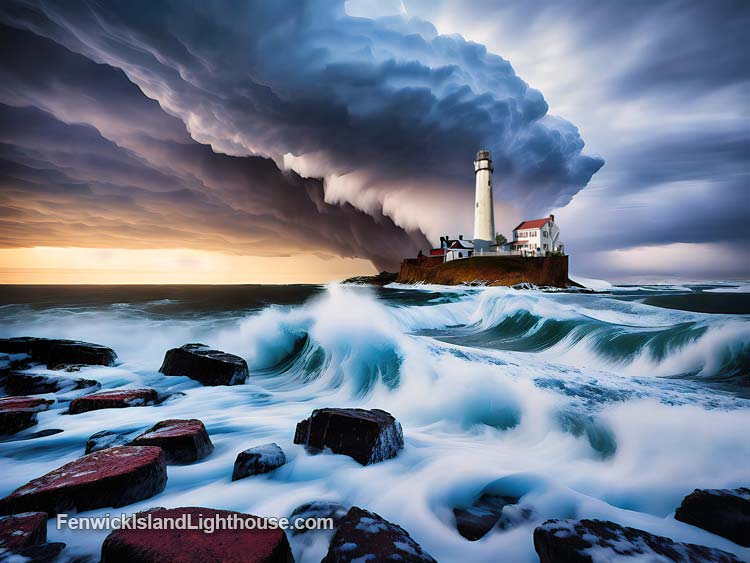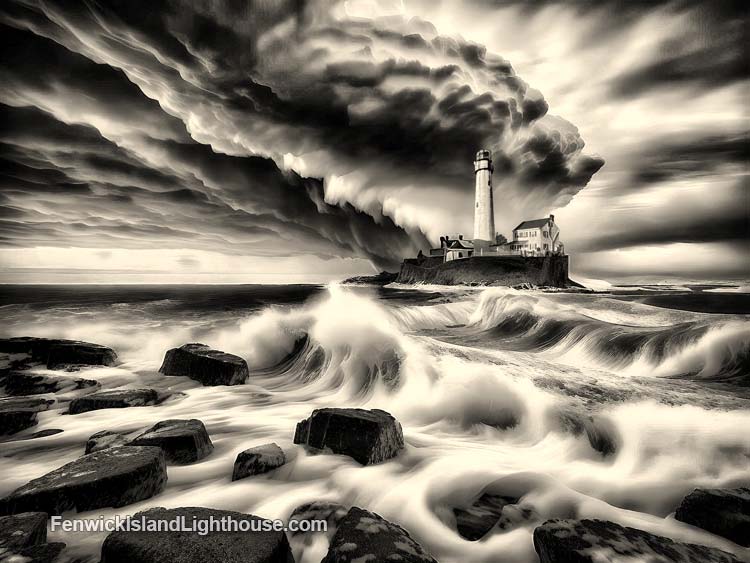Standing tall against the storm in a make-believe location…
Here is an imaginary mashup of an actual photograph of the Fenwick Island Lighthouse in a composite presentation with an ai-created stormy sky as the background.
This could be a nightmare scenario if there were to be an upheaval of the earths internal forces, creating a new geologic structure for the geographic island of Fenwick Island. But, of course, that would need be coupled with massive climate change and the resultant huge rise is sea level. Right?
Could this really happen?
Truly hypothetical, of course, but there are many who understand that climate change is a real thing. From elementary school science we are taught about the history of our planet. The Ice Ages began 2.4 million years ago and lasted until 11,500 years ago. During this time, the earth’s climate repeatedly changed between very cold periods, during which glaciers covered large parts of the world and very warm periods during which many of the glaciers melted and the sea levels rose and flooded many lands. You do know what caused the end of the last Ice Age, don’t you? It was Global Warming, of course.
The following is excerpted from the USGS “Water Science School” article on Sea Level and Climate Change…
Climate-related sea-level changes of the last century are very minor compared with the large changes in sea level that occur as climate oscillates between the cold and warm intervals that are part of the Earth’s natural cycle of long-term climate change.
During cold-climate intervals, known as glacial epochs or ice ages, sea level falls because of a shift in the global hydrologic cycle: water is evaporated from the oceans and stored on the continents as large ice sheets and expanded ice caps, ice fields, and mountain glaciers. Global sea level was about 125 meters below today’s sea level at the last glacial maximum about 20,000 years ago (Fairbanks, 1989). As the climate warmed, sea level rose because the melting North American, Eurasian, South American, Greenland, and Antarctic ice sheets returned their stored water to the world’s oceans. During the warmest intervals, called interglacial epochs, sea level is at its highest. Today we are living in the most recent interglacial, an interval that started about 10,000 years ago and is called the Holocene Epoch by geologists.
Of course, the above images are available as wall art prints and on a variety of home decor items.
Link to: Fenwick Island Lighthouse on the Rocks
Link to: Fenwick Island Lighthouse on the Rocks Monochrome
Link to real photographs of: The Fenwick Island Lighthouse Collection


One Reply to “Fenwick Island Lighthouse on the Rocks”